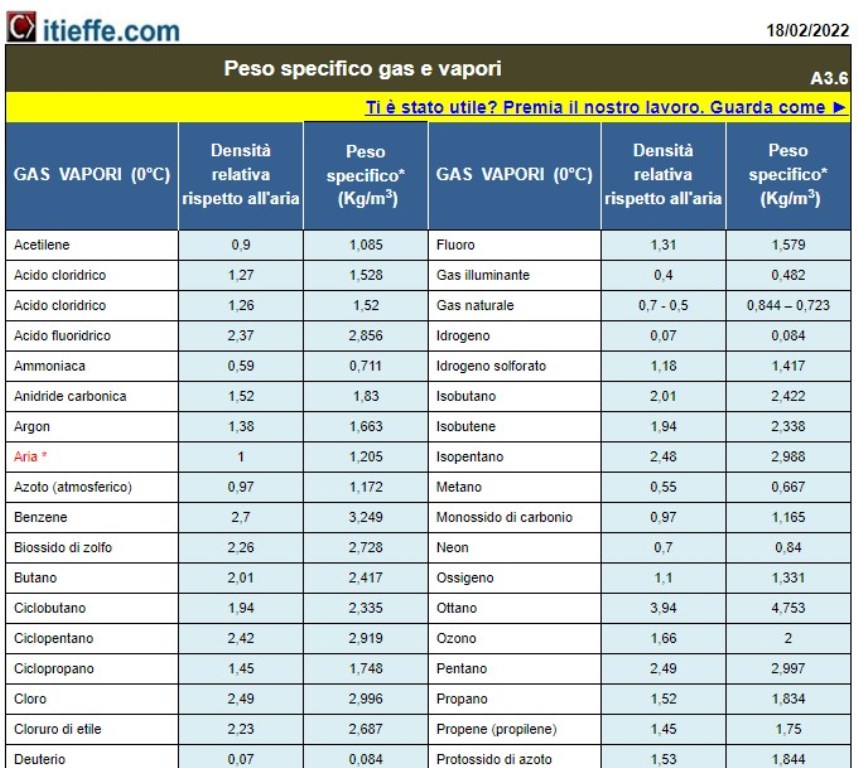Specific weight of gas and vapors

Specific weight of gas vapors
This paper created by Itieffe is a document dedicated to exploring the concept of specific gravity when applied to gases and vapors. This topic is of fundamental importance in various scientific and engineering fields, since understanding the specific gravity of gases and vapors is crucial for a number of practical applications, from the design of ventilation systems to the management of gases in the chemical industry.
In this paper, we will examine the following key points:
- Definition of specific gravity of gases: we will explain the concept of specific gravity applied to gases, which is different from the density of solids and liquids. We will use common units of measurement, such as kilogram per cubic meter (kg/m³) in the International System (SI), to express the specific gravity of gases.
- Specific gravity of common gases: we will explore the specific gravity of common gases, such as air, water vapor, and other gases used in industrial and environmental applications. Specific data will be provided on each gas.
The main objective of this paper is to provide a comprehensive information resource for anyone interested in the specific gravity of gases and vapors. Understanding this concept is essential for a wide range of professionals, including engineers, chemists, environmentalists and designers, as it impacts system design, environmental management and safety in environments where gases and vapors are present.
Specific weight of gas and vapors
“Specific gravity”, also known as density, is a physical quantity that represents the amount of mass of a substance contained in a given unit of volume. In other words, specific gravity measures how much matter is concentrated in a specific space. It is usually expressed in units of mass per unit of volume, such as kilograms per cubic meter (kg/m³) in the International System (SI).
The general formula for calculating specific gravity is:
Specific Weight=Mass/Volume.
Where:
- “Mass” represents the amount of matter contained in the object or substance, usually measured in kilograms (kg).
- “Volume” indicates the space occupied by that mass, usually measured in cubic meters (m³).
Specific gravity can vary greatly between different substances and materials. For example, the specific weight of water is approximately 1000 kg/m³ at room temperature. This means that one cubic meter of water has a mass of 1000 kilograms. Denser materials, such as iron, will have a much higher specific gravity, while less dense materials, such as air, will have a much lower specific gravity.
Knowledge of specific gravity is fundamental in several scientific and engineering disciplines, as it affects various aspects, including the load-bearing capacity of structures and the choice of materials in specific applications.
Other free programs of the same kind offered by itieffe ▼
Specific weight of gas and vapors
The program below is free to use.
To access the reserved version (see below), full page and without advertising, you must be registered.
You can register now by clicking HERE
